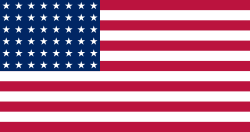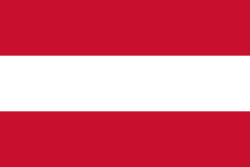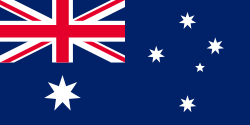Olympische Winterspiele 1956/Eiskunstlauf
| Eiskunstlauf bei den Olympischen Winterspielen 1956 | |
|---|---|
 | |
| Information | |
| Austragungsort | |
| Wettkampfstätte | Stadio del ghiaccio |
| Nationen | 15 |
| Athleten | 59 (27 |
| Datum | 29. Januar bis 2. Februar 1956 |
| Entscheidungen | 3 |
| ← Oslo 1952 | |
Bei den VII. Olympischen Winterspielen 1956 in Cortina d’Ampezzo fanden drei Wettbewerbe im Eiskunstlauf statt. Austragungsort war das Stadio del ghiaccio, das 15.000 Zuschauern Platz bot.
Bilanz
Medaillenspiegel
| Platz | Land | Gesamt | |||
|---|---|---|---|---|---|
| 1 | 2 | 2 | 1 | 5 | |
| 2 | 1 | – | 1 | 2 | |
| 3 | – | 1 | – | 1 | |
| 4 | – | – | 1 | 1 |
Medaillengewinner
| Konkurrenz | Gold | Silber | Bronze |
|---|---|---|---|
| Herren | |||
| Damen | |||
| Paare |
Ergebnisse
- K = Kür
- P = Pflicht
- Pz = Platzziffer
- Pkt. = Punkte
Herren
| Platz | Land | Sportler | P | K | Pz | Pkt. |
|---|---|---|---|---|---|---|
| 1 | Hayes Alan Jenkins | 1 | 2 | 13 | 166,43 | |
| 2 | Ronald Robertson | 2 | 1 | 16 | 165,79 | |
| 3 | David Jenkins | 3 | 3 | 27 | 162,82 | |
| 4 | Alain Giletti | 4 | 4 | 37 | 159,63 | |
| 5 | Karol Divín | 5 | 3 | 49,5 | 154,25 | |
| 6 | Michael Booker | 6 | 6 | 53,5 | 154,26 | |
| 7 | Norbert Felsinger | 7 | 8 | 67 | 150,55 | |
| 8 | Charles Snelling | 9 | 7 | 67 | 150,42 | |
| 9 | Alain Calmat | 8 | 9 | 77 | 148,35 | |
| 10 | Tilo Gutzeit | 10 | 11 | 90 | 141,08 | |
| 11 | François Pache | 11 | 10 | 95 | 139,39 | |
| 12 | Hans Müller | 12 | 12 | 112 | 135,28 | |
| 13 | Allan Ganter | 13 | 14 | 114 | 132,41 | |
| 14 | Darío Villalba | 14 | 16 | 128 | 127,30 | |
| 15 | Kalle Tuulos | 15 | 15 | 137 | 124,50 | |
| 16 | Charles Keeble | 16 | 13 | 137 | 123,93 |
Datum: 1. Februar
Die Leistungen wurden von neun Wertungsrichtern beurteilt.
Hayes Alan Jenkins hatte nach den Olympischen Spielen 1952 die Nachfolge seines erfolgreichen Landsmanns Richard Button angetreten und war seitdem ungeschlagen geblieben. So ging er als unbestrittener Favorit nach Cortina und gewann die Goldmedaille. Allerdings war die Entscheidung knapper als erwartet. Jenkins’ Landsmann Ronald Robertson, bekannt für seine Stärken in Sprüngen und Pirouetten, gewann die Kür. Am Ende lag Robertson weniger als einen Punkt und drei Platzziffern hinter Jenkins. Die Bronzemedaille ging an Jenkins’ Bruder David Jenkins, der nach den Olympischen Spielen wiederum die Nachfolge seines Bruders antrat und vier Jahre später Olympiasieger wurde. Die USA besetzten somit das komplette Podium in der Herrenkonkurrenz. Dies war das zweite Mal in der olympischen Geschichte des Eiskunstlaufs nach 1908, als Schweden sämtliche Medaillen in der Herrenkonkurrenz gewinnen konnte. Erstmals in der olympischen Geschichte des Eiskunstlaufs blieb ein Podium ohne europäische Beteiligung. Bester Europäer war der Franzose Alain Giletti als Vierter.
Damen
| Platz | Land | Sportlerin | P | K | Pz | Pkt. |
|---|---|---|---|---|---|---|
| 1 | Tenley Albright | 1 | 1 | 12,0 | 169,67 | |
| 2 | Carol Heiss | 2 | 2 | 21,0 | 168,02 | |
| 3 | Ingrid Wendl | 3 | 5 | 39,0 | 159,44 | |
| 4 | Yvonne Sugden | 4 | 9 | 53,0 | 156,62 | |
| 5 | Hanna Eigel | 5 | 4 | 52,0 | 157,15 | |
| 6 | Carole Jane Pachl | 6 | 8 | 73,0 | 154,74 | |
| 7 | Hanna Walter | 8 | 7 | 83,5 | 153,89 | |
| 8 | Catherine Machado | 10 | 3 | 86,5 | 153,48 | |
| 9 | Ann Johnston | 7 | 10 | 94,0 | 152,56 | |
| 10 | Rosel Pettinger | 11 | 6 | 101,0 | 152,04 | |
| 11 | Erica Batchelor | 9 | 12 | 116,0 | 149,67 | |
| 12 | Sjoukje Dijkstra | 12 | 15 | 140,0 | 145,80 | |
| 13 | Joan Haanappel | 14 | 11 | 145,5 | 145,85 | |
| 14 | Beth Peach | 13 | 13 | 151,0 | 144,75 | |
| 15 | Fiorella Negro | 16 | 14 | 168,5 | 142,31 | |
| 16 | Karin Borner | 15 | 16 | 171,0 | 141,69 | |
| 17 | Maryvonne Huet | 17 | 19 | 194,0 | 138,30 | |
| 18 | Alice Fischer | 18 | 20 | 203,0 | 137,69 | |
| 19 | Ally Lundström | 19 | 18 | 206,0 | 136,34 | |
| 20 | Jindra Kramperová | 21 | 17 | 209,0 | 136,67 | |
| 21 | Manuela Angeli | 20 | 21 | 222,0 | 133,51 |
Datum: 2. Februar
Die Leistungen wurden von elf Wertungsrichtern beurteilt.
Paare
| Platz | Land | Paar | Pz | Pkt. |
|---|---|---|---|---|
| 1 | Sissy Schwarz / Kurt Oppelt | 14,0 | 11,31 | |
| 2 | Frances Dafoe / Norris Bowden | 16,0 | 11,32 | |
| 3 | Marianna Nagy / László Nagy | 32,0 | 11,03 | |
| 4 | Marika Kilius / Franz Ningel | 35,5 | 10,98 | |
| 5 | Carole Ormaca / Robin Greiner | 56,0 | 10,71 | |
| 6 | Barbara Wagner / Robert Paul | 54,5 | 10,74 | |
| 7 | Lucille Ash / Sully Kothmann | 59,5 | 10,63 | |
| 8 | Věra Suchánková / Zdeněk Doležal | 68,5 | 10,53 | |
| 9 | Liesl Ellend / Konrad Lienert | 77,0 | 10,38 | |
| 10 | Joyce Coates / Anthony Holles | 88,0 | 10,00 | |
| 11 | Carolyn Krau / Rodney Ward | 93,0 | 9,86 |
Datum: 3. Februar
Die Leistungen wurden von neun Wertungsrichtern beurteilt.
Weblinks
- Eiskunstlauf bei den Olympischen Winterspielen 1956 in der Datenbank von Sports-Reference (englisch; archiviert vom Original)
Auf dieser Seite verwendete Medien
Olympic Rings without "rims" (gaps between the rings), As used, eg. in the logos of the 2008 and 2016 Olympics. The colour scheme applied here was specified in 2023 guidelines.
Flag of Italy from 1946 to 2003, when exact colors were specified.
Unicode Geschlechtersymbolder
Autor/Urheber: maix¿?, Lizenz: CC BY-SA 2.5
A gold medal with the olympic rings inside
Autor/Urheber: maix¿?, Lizenz: CC BY-SA 2.5
A silver medal with the olympic rings inside
Autor/Urheber: maix¿?, Lizenz: CC BY-SA 2.5
A bronze medal with the olympic rings inside
US Flag with 48 stars. In use for 47 years from July 4, 1912, to July 3, 1959.
Flagge Österreichs mit dem Rot in den österreichischen Staatsfarben, das offiziell beim österreichischen Bundesheer in der Charakteristik „Pantone 032 C“ angeordnet war (seit Mai 2018 angeordnet in der Charakteristik „Pantone 186 C“).
Flagge des Vereinigten Königreichs in der Proportion 3:5, ausschließlich an Land verwendet. Auf See beträgt das richtige Verhältnis 1:2.
Flagge des Vereinigten Königreichs in der Proportion 3:5, ausschließlich an Land verwendet. Auf See beträgt das richtige Verhältnis 1:2.
Die quadratische Nationalfahne der Schweiz, in transparentem rechteckigem (2:3) Feld.
Flag of Australia, when congruence with this colour chart is required (i.e. when a "less bright" version is needed).
See Flag of Australia.svg for main file information.Autor/Urheber: SanchoPanzaXXI, Lizenz: CC BY-SA 4.0
Flag of Spain during the Spanish State. It was adopted on 11 October 1945 with Reglamento de Banderas Insignias y Distintivos (Flags, Ensigns and Coats of Arms Bill)
Autor/Urheber: SanchoPanzaXXI, Lizenz: CC BY-SA 4.0
Flag of Spain during the Spanish State. It was adopted on 11 October 1945 with Reglamento de Banderas Insignias y Distintivos (Flags, Ensigns and Coats of Arms Bill)
Olympic Rings without "rims" (gaps between the rings), As used, eg. in the logos of the 2008 and 2016 Olympics. The colour scheme applied here was specified in 2023 guidelines.
The Canadian Red Ensign used between 1921 and 1957.
This image has compared for accuracy (mainly colors) using an image from World Statesmen. The only change is making the maple leaves green from red. This image has compared for accuracy (mainly colors) using an image from World Statesmen. The most recent version of this image has changed the harp into one with a female figure; see [http://flagspot.net/flags/ca-1921.html FOTW
Pictograms of Olympic sports - Figure skating


















